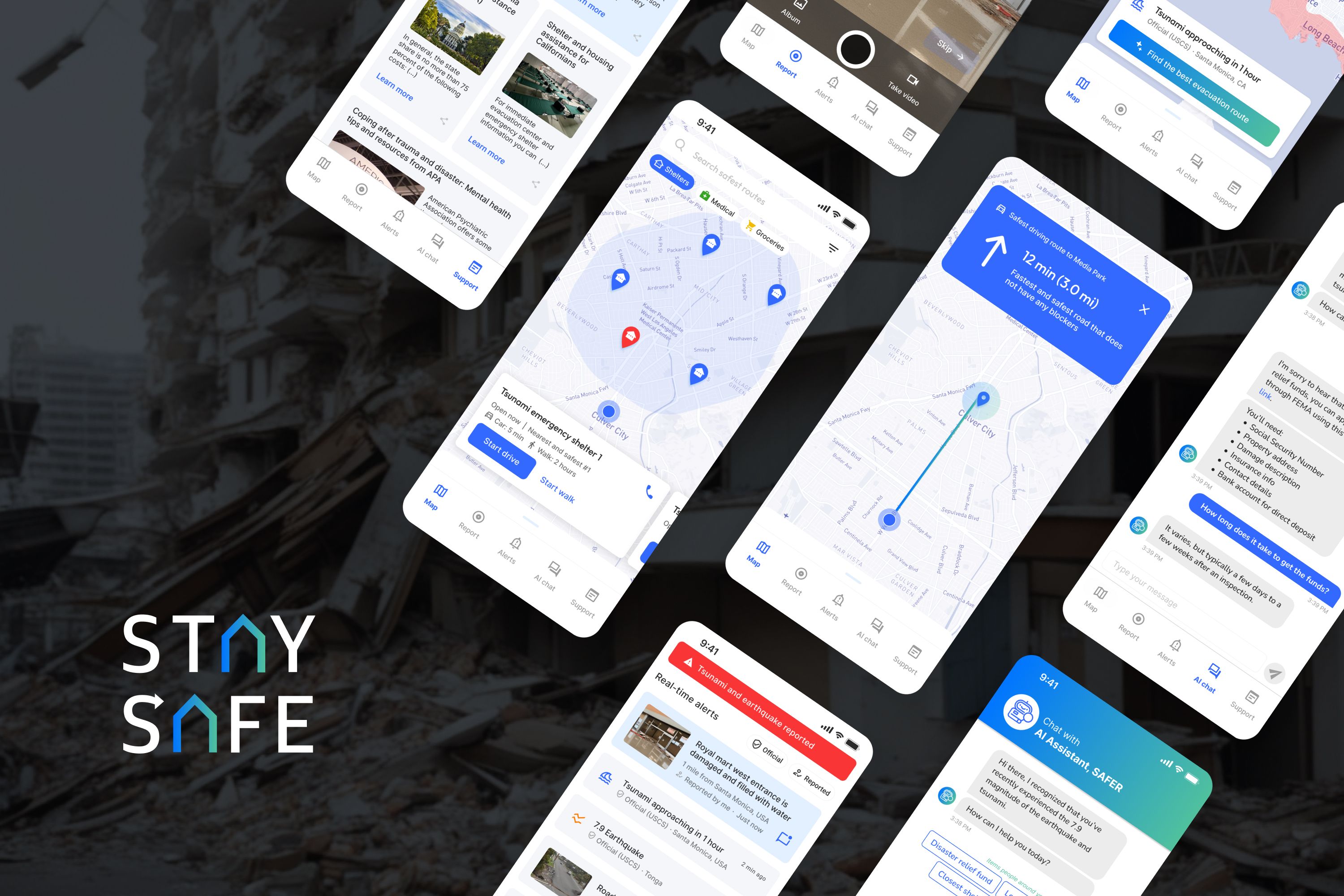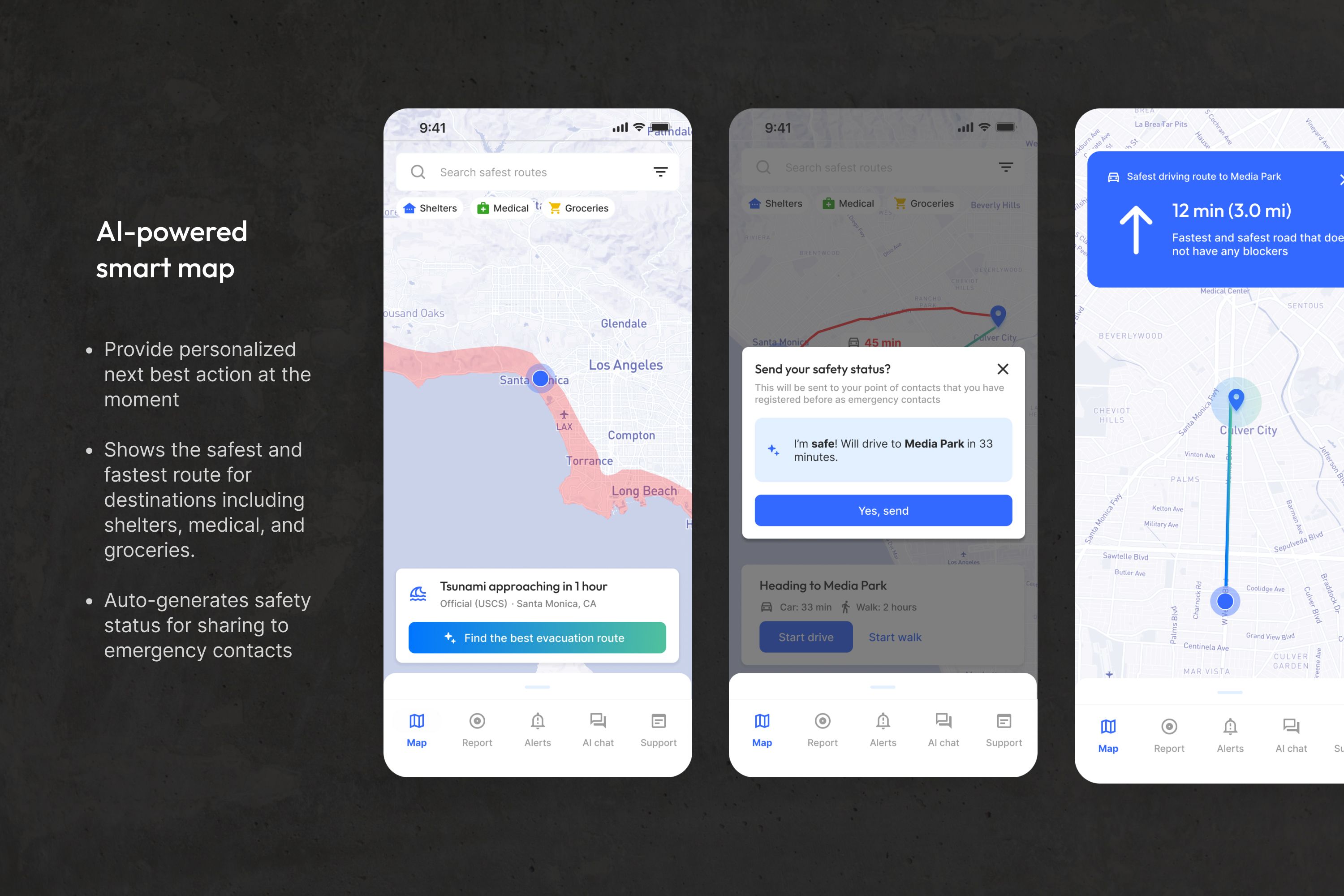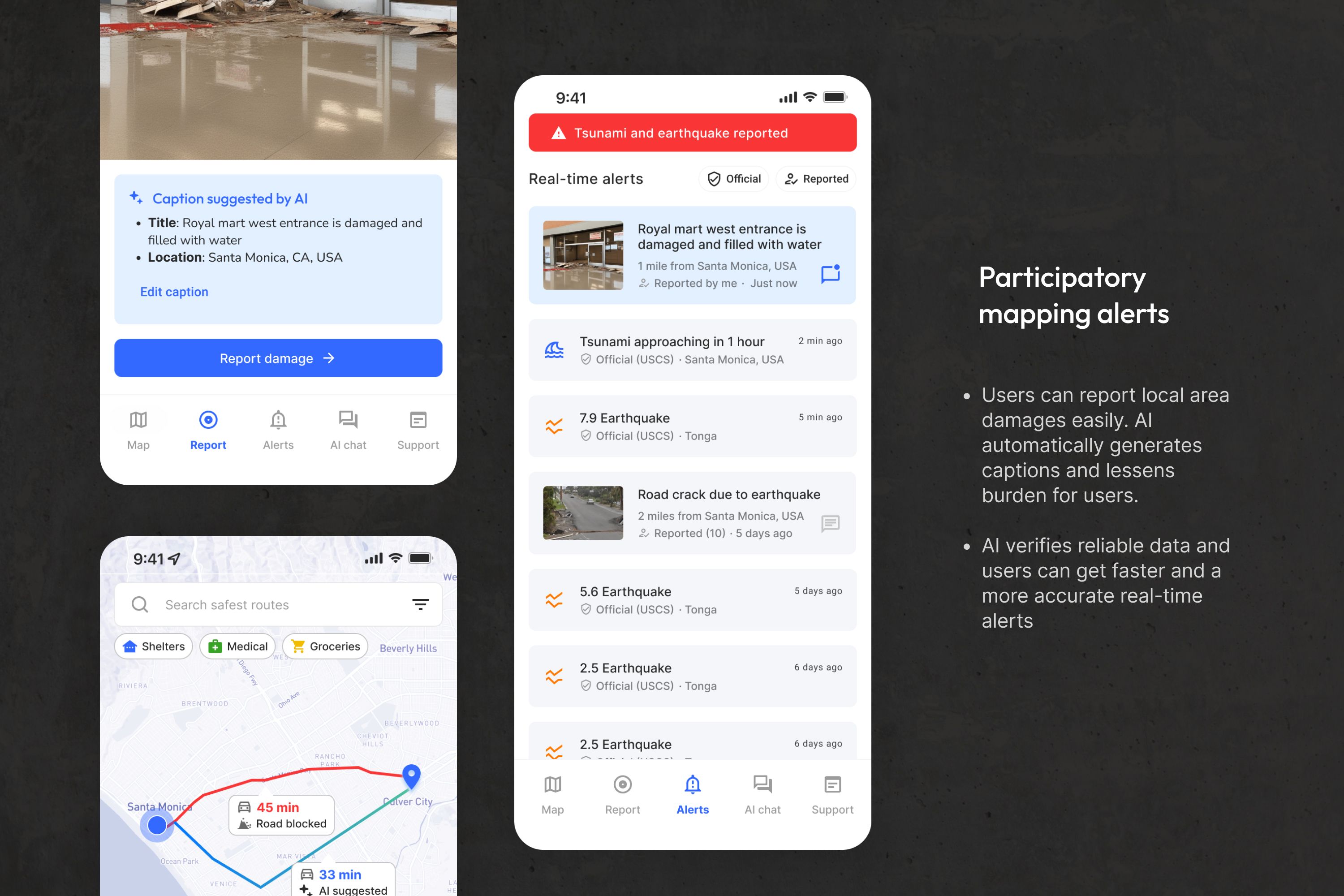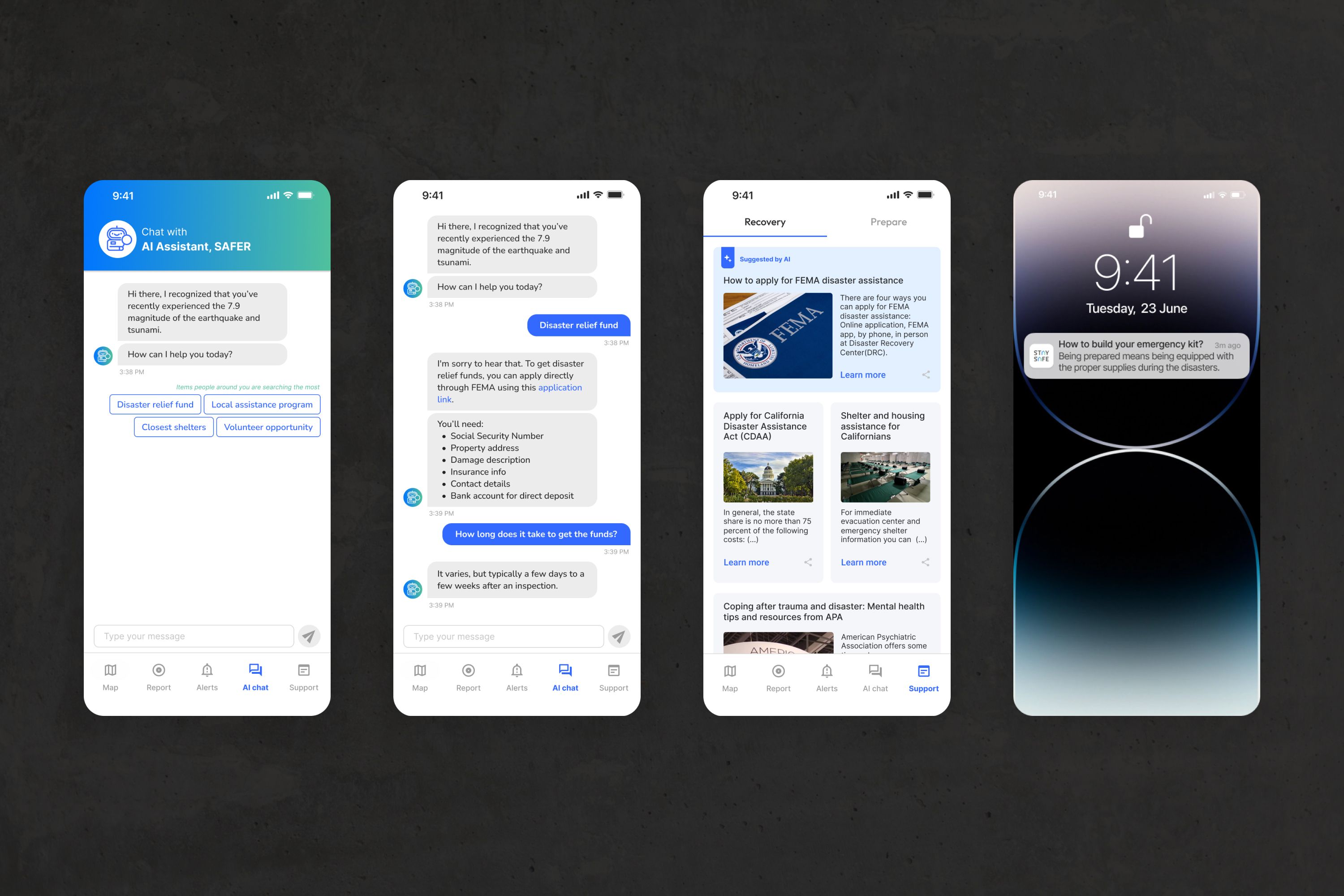
Designers
Yeokyeong Chung, Eunjoo Lim
Year
2024
Category
Concept
Country
United States
Design Studio / Department
Survivors5.8

Three questions for the project team
What was the particular challenge of the project from a UX point of view?
Our challenge was to identify a unique feature that addressed complex user problems and differentiated our product from existing solutions. Many apps struggle to deliver real-time information through a guided, personalized, and user-friendly experience, and none covers all phases of a disaster comprehensively. To address this, we integrated AI and participatory mapping technology for real-time alerts. This reduced cognitive overload and provided an intuitive design. The AI guides users throughout their journey, offering relevant and accurate real-time information before, during, and after a disaster.
What was your personal highlight in the development process? Was there an aha!-moment, was there a low point?
A highlight was realizing how AI simplifies user interactions, especially during stressful emergencies. Usability testing revealed that users preferred simple actions without excessive thinking, leading to the insight: “You don’t have to think!” We designed AI to provide the best personalized action for users at critical moments, ensuring timely guidance without complex decision-making. Additionally, participants emphasized the importance of real-time updates. Our participatory mapping approach boosts the accuracy and speed of information, ensuring that users receive relevant updates by combining bottom-up data with top-down information.
Where do you see yourself and the project in the next five years?
In the near future, we'll continuously refine our first concept product to improve the overall usability and user experience based on our user feedback. We plan to improve navigation functions, allowing users to share locations and directions with family and friends during emergencies. We envision expanding the app globally, making it a necessity on everyone's devices. Future collaborations with government organizations and corporations could enhance the product's reach and functionality. We also see embedded AI capabilities integrating into mobile devices, allowing offline information access, and scaling the app to support more locations, languages, and types of natural disasters.


